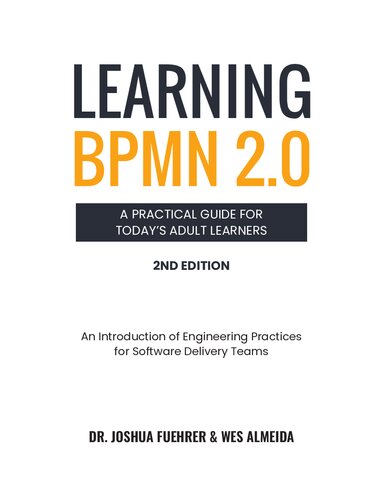

Most ebook files are in PDF format, so you can easily read them using various software such as Foxit Reader or directly on the Google Chrome browser.
Some ebook files are released by publishers in other formats such as .awz, .mobi, .epub, .fb2, etc. You may need to install specific software to read these formats on mobile/PC, such as Calibre.
Please read the tutorial at this link. https://ebooknice.com/page/post?id=faq
We offer FREE conversion to the popular formats you request; however, this may take some time. Therefore, right after payment, please email us, and we will try to provide the service as quickly as possible.
For some exceptional file formats or broken links (if any), please refrain from opening any disputes. Instead, email us first, and we will try to assist within a maximum of 6 hours.
EbookNice Team

Status:
Available0.0
0 reviews
ISBN 10: 8841072296
ISBN 13: 9798841072294
Author: Joshua Fuehrer, Wesley Almeida
Many of us go through life unaware of how we learn or acquire a skill set; we just learn it.
We all have the capability to learn. From that perspective and with a passion for business process modeling with Business Process Modeling and Notation (BPMN), we set out to write a book that will provide an understanding of BPMN while engaging in the adult learning process for acquiring knowledge.
This book will bridge the gap between theory and practice and make it interesting while you are doing it!
While we focus on learning BPMN, we also teach foundational concepts, a balance between academia and real-world examples related to creating knowledge, moving up the spiral of knowledge. With each spiral, more insight is gained, and better understanding is attained.
With the second edition, we provide a perspective to help you use BPMN to relay technical designs from engineers to stakeholders and vice-versa.
We also discuss how BPMN helps document and convey architectural decisions to future versions of your team so they can quickly identify solutions without having to reverse engineer code every time.
Reviewing a diagram is much easier than rebuilding an architecture from legacy source code!
So grab your copy, and start learning the right way, today!
Introduction to BPMN 2.0
What is BPMN and why is it important?
The evolution of BPMN to version 2.0
Foundational concepts of business process modeling
Core BPMN Elements
Activities (Tasks, Subprocesses, Call Activities)
Gateways (Exclusive, Inclusive, Parallel, Event-Based, Complex)
Events (Start, Intermediate, End - various types like Message, Timer, Error, Escalation, etc.)
Sequence Flows and Message Flows
Pools and Lanes (Swimlanes)
Data Objects and Data Stores
Artifacts (Text Annotations, Groups)
Modeling Method and Style
Best practices for creating clear and effective BPMN diagrams
Hierarchical modeling and process levels
Techniques for handling exceptions and complex scenarios
Collaboration diagrams and black-box pools
Advanced BPMN Concepts (Potentially)
Compensation
Transactions
Event Subprocesses
Practical Application and Engineering Practices
How BPMN supports software delivery teams
Bridging the gap between business and technical stakeholders
Using BPMN for requirements shaping and architectural documentation
Integrating BPMN with other standards (e.g., DMN for Decision Modeling)
Real-world examples and case studies
learning bpmn 2.0
learning bpmn 2.0 a practical guide for today's adult learners
learning bpmn 2.0 a practical guide for today’s adult learners
bpmn 2.0 handbook second edition pdf
learning bpmn 2.0 pdf
bpmn 2.0 training
learning bpmn
Tags: Joshua Fuehrer, Wesley Almeida, BPMN, Guide